Key takeaways
- Plato’s Allegory of the Cave highlights the struggle between ignorance and knowledge, encouraging self-reflection on personal perceptions.
- Allegories are effective in philosophy education as they transform complex ideas into relatable experiences, fostering emotional engagement and critical thinking.
- Practical lessons from the allegory emphasize the importance of questioning assumptions, embracing discomfort for personal growth, and the responsibility of sharing insights once enlightened.
- Applying the allegory to modern life involves recognizing the limitations of perspective shaped by digital echo chambers and actively seeking diverse viewpoints to overcome them.
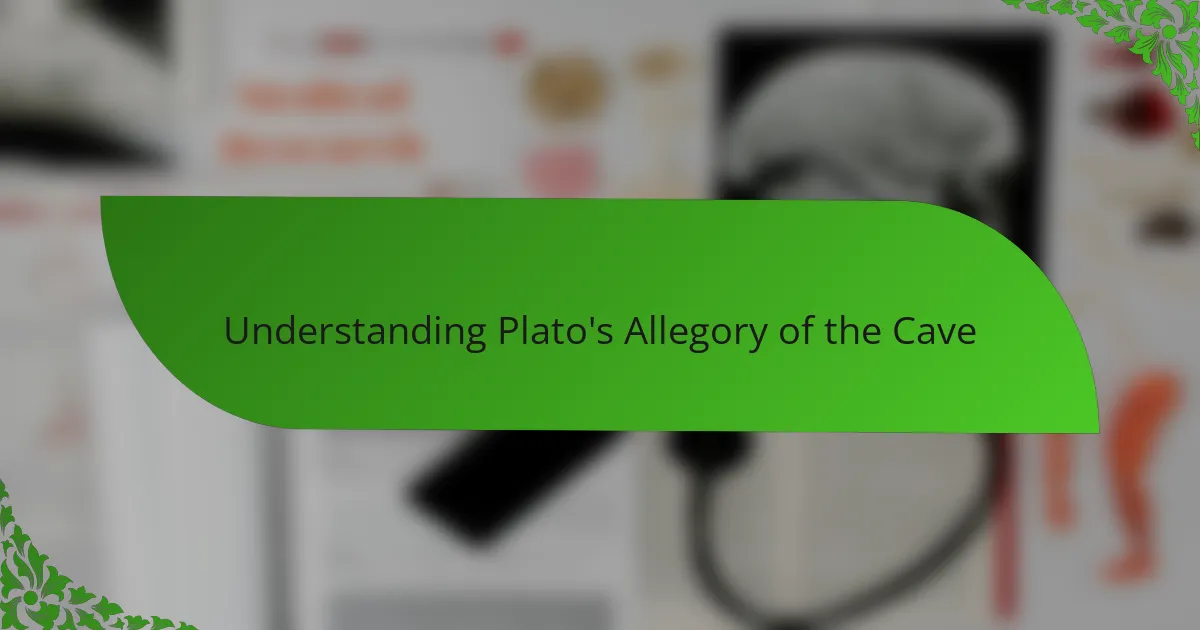
Understanding Plato’s Allegory of the Cave
When I first encountered Plato’s Allegory of the Cave, I was struck by how vividly it captured the struggle between ignorance and knowledge. It made me wonder: have I ever been blind to the deeper realities around me, just like the prisoners who only saw shadows? This metaphor felt deeply personal, as if Plato was inviting me to question my own perceptions.
The allegory describes prisoners chained in a cave, only able to see shadows projected on a wall. At first, I thought it was just a fascinating story, but then I realized those shadows represent how limited and distorted our understanding can be when we rely solely on surface appearances. It challenged me to think beyond the obvious and seek true enlightenment.
Reflecting on this allegory, I ask myself, what would it feel like to step out of my comfort zone and confront a new reality? Plato’s narrative is not just about philosophy; it’s about a personal journey of growth and transformation—a journey I believe everyone can relate to, including myself.
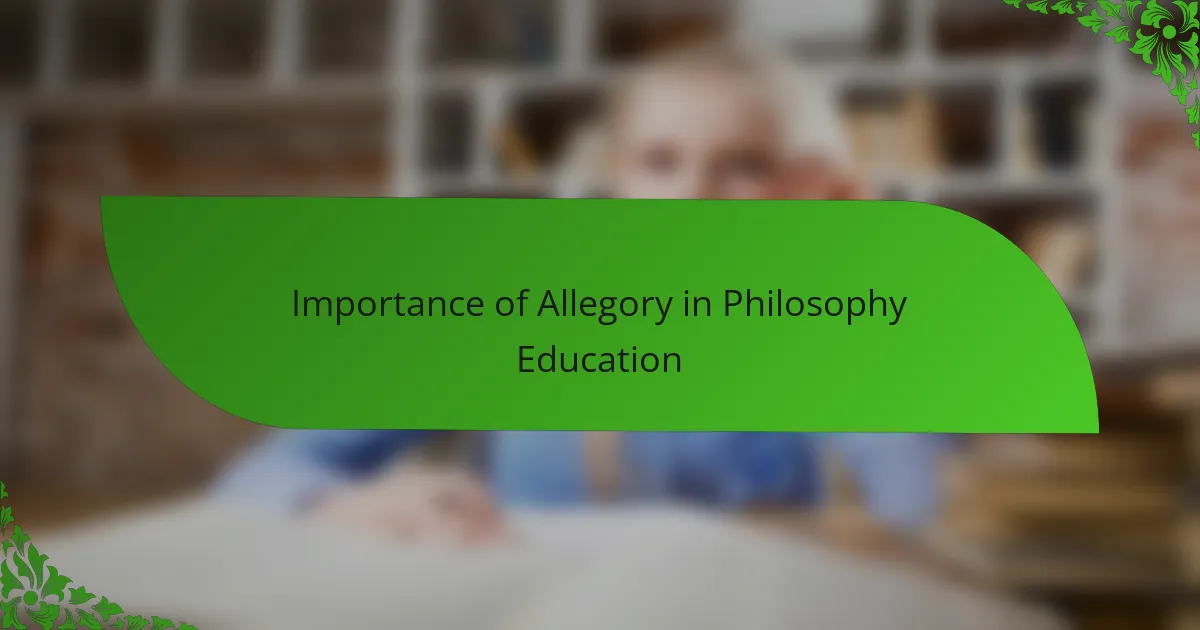
Importance of Allegory in Philosophy Education
Allegories like Plato’s serve as powerful tools in philosophy education because they transform abstract ideas into vivid experiences. When I first grappled with the cave allegory, it wasn’t just a lesson in theory—it was a moment of self-awareness. Have you ever noticed how stories can stick with you longer than dry explanations? That’s exactly why allegories matter; they make complex concepts relatable and memorable.
From my perspective, allegories also spark critical thinking by inviting us to question our own views and assumptions. I remember feeling unsettled when I realized how comfortable the cave prisoners seemed with their limited understanding. That discomfort pushed me to examine my own “shadows” — those beliefs I hadn’t really challenged before. Isn’t that the heart of learning philosophy, after all? To question what we take for granted?
Finally, allegories create a space for emotional connection in philosophy education. Rather than just reading about ideas, I found myself emotionally invested in the prisoners’ plight as if it were my own. This emotional engagement deepened my appreciation for the subject and motivated me to seek deeper insights. Don’t you think learning is far more effective when it touches something inside us, not just our minds?
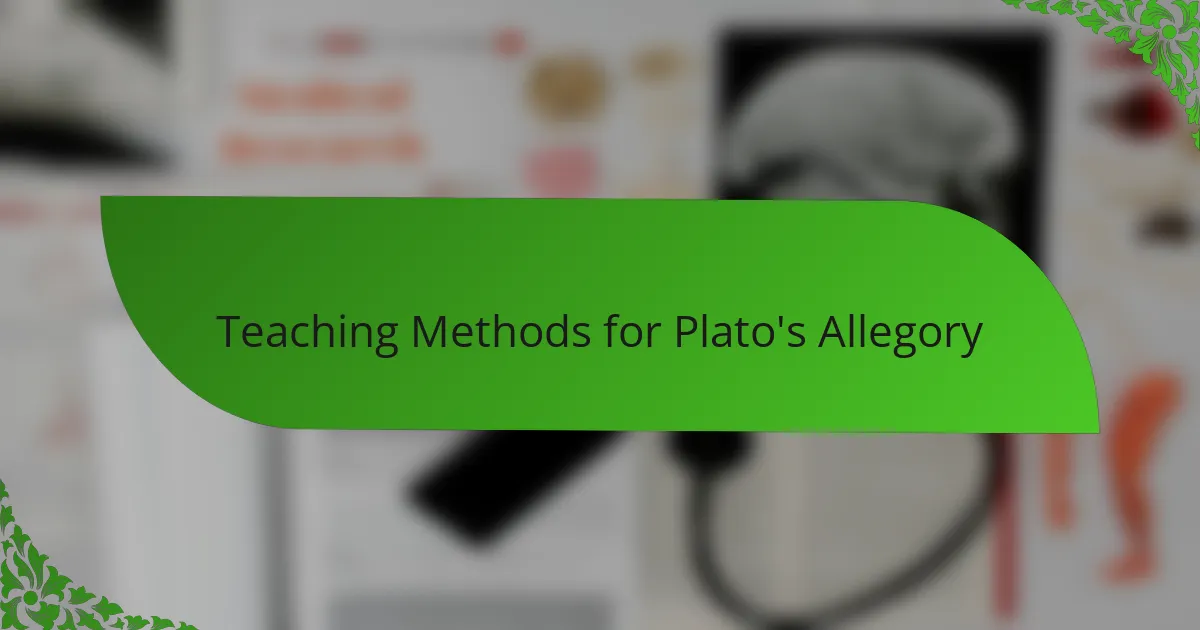
Teaching Methods for Plato’s Allegory
One approach I found effective in teaching Plato’s Allegory is using role-play exercises. When students physically act out the roles of prisoners or the freed individual, the abstract ideas become tangible. Have you noticed how embodying a concept helps it stick? For me, seeing peers wrestle with the discomfort of “awakening” brought fresh energy to the lesson.
Visual aids also made a big difference in my experience. Projecting images or short videos of caves and shadows helped bridge the gap between Plato’s ancient text and our modern context. It sparked questions like, “What are the shadows in our digital age?” which led to lively discussions. Isn’t that what good teaching is—connecting timeless ideas to today’s world?
Lastly, I’ve discovered that encouraging personal reflection deepens understanding. After exploring the allegory, I invite students to write or share moments when they realized their own “shadows.” This personal insight often surprises them and me. Why? Because philosophy isn’t just theory—it’s about our real lives and growth, something I’ve felt vividly through this allegory.
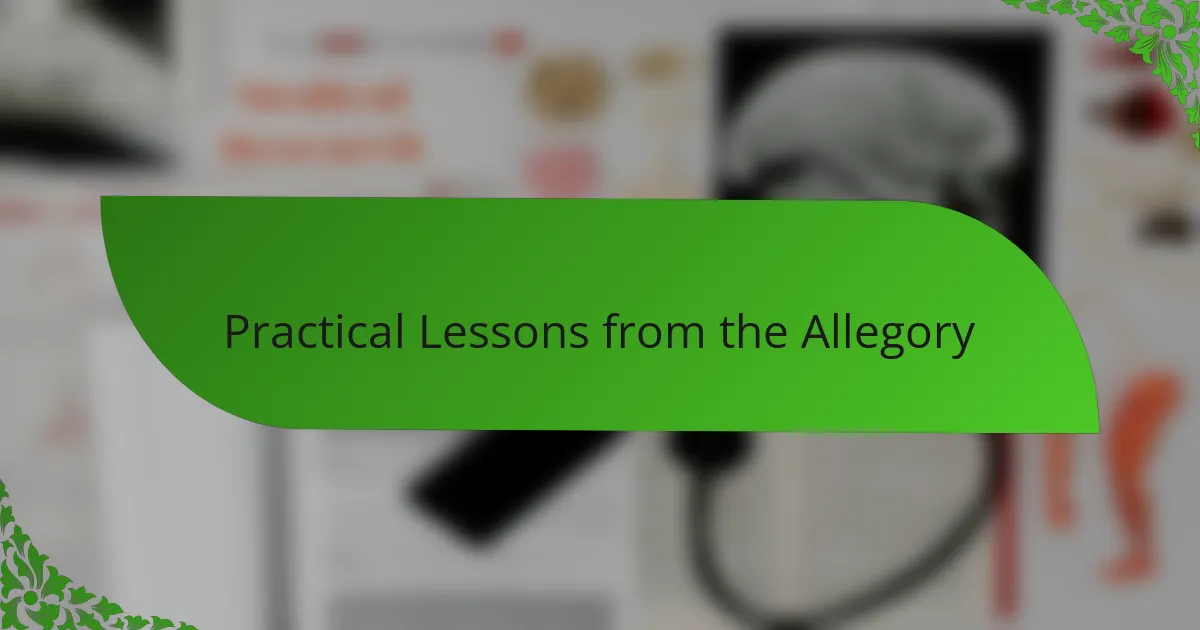
Practical Lessons from the Allegory
Thinking about the practical lessons from Plato’s Allegory, I realize it’s a powerful reminder to question what I take for granted daily. Have you ever caught yourself accepting a version of truth without digging deeper? This allegory nudges us to seek knowledge beyond surface appearances and to stay curious about the world.
One lesson that struck me personally is the courage required to face uncomfortable realities. Stepping out of the cave isn’t easy—it meant confronting uncertainty and shifting perspectives. I’ve found that real growth often comes from those moments of discomfort, when we abandon familiar shadows for something more authentic.
What truly resonates is the responsibility that comes with enlightenment. Once you’ve seen beyond the cave, can you ignore those still chained inside? This made me reflect on my own role in sharing insights and fostering understanding, reminding me that knowledge is not just personal, but something to be shared and nurtured.
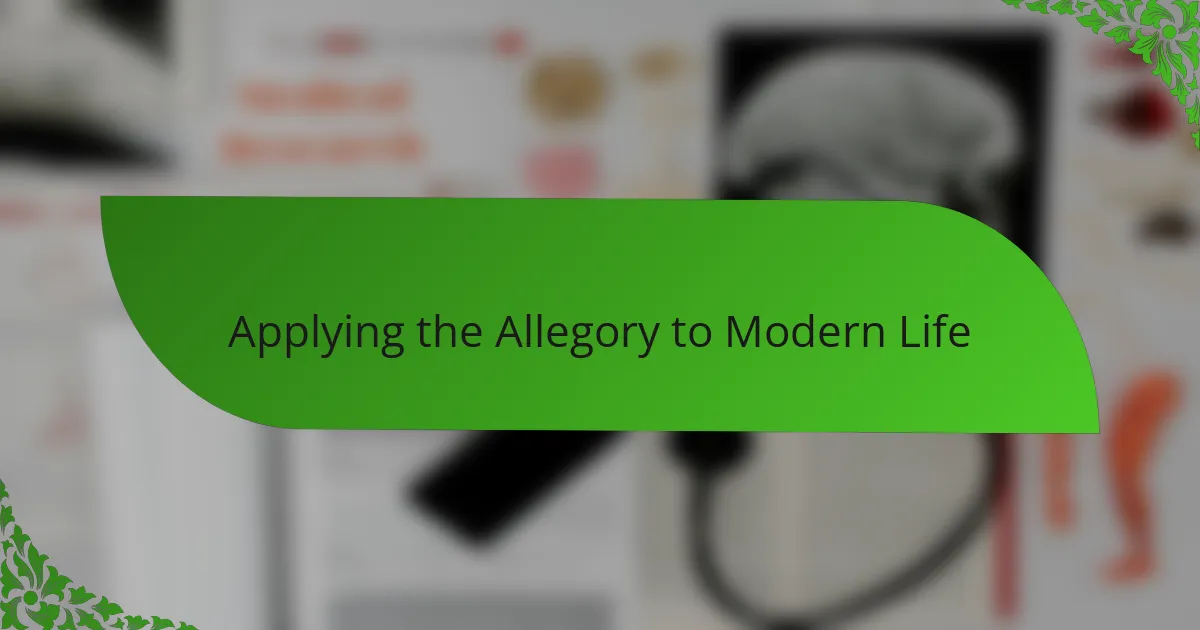
Applying the Allegory to Modern Life
Applying the Allegory to Modern Life means recognizing how easily we can become prisoners of our own limited perspectives. I’ve caught myself scrolling through endless newsfeeds, mistaking curated headlines for the whole truth—much like those who watch only shadows on the wall. Doesn’t that make you wonder how often we accept a filtered reality without questioning what lies beyond?
In today’s digital age, the cave becomes more than a physical place; it’s the echo chamber of algorithms that reinforce our beliefs. I remember feeling uneasy when I realized how much my online choices shaped what I saw, nudging me toward a narrow worldview. Have you experienced that sudden awareness that your “reality” might be a carefully constructed shadow play?
Stepping out into the light now involves a deliberate effort to seek diverse viewpoints and embrace discomfort. It hasn’t been easy for me—I often resist challenging familiar ideas—but each small step outside the cave feels like a fresh awakening. Isn’t that the essence of growth: confronting the unknown and choosing truth over comfort?
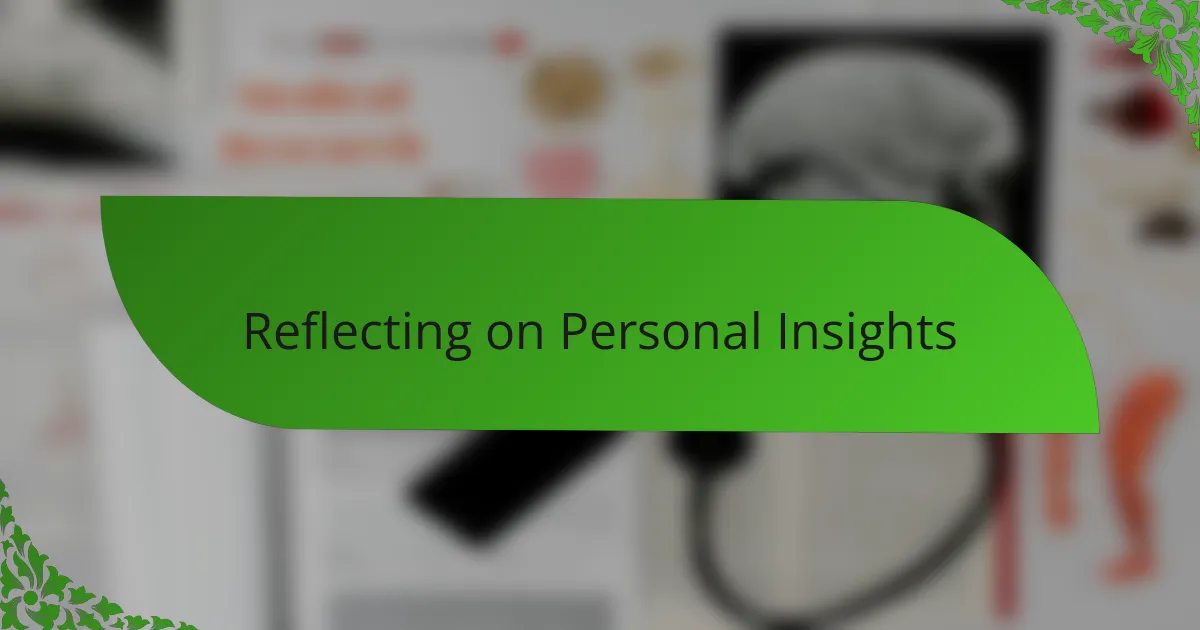
Reflecting on Personal Insights
Looking back on my journey with Plato’s Allegory, I realize how much it has reshaped my view of self-awareness. There were moments when I caught myself comfortably settled in my own “cave,” hesitant to question what felt familiar. Have you ever felt that pull to cling to what you know, even if it means ignoring a deeper truth? I know I have—and acknowledging that was humbling.
Sometimes, the most meaningful insights came not from understanding the allegory intellectually but from feeling its emotional weight. I remember a particular moment of unease when I recognized how easily I could be blinded by my biases, just like the prisoners watching shadows. This emotional jolt made the allegory come alive for me—not just as an ancient story, but as a mirror reflecting my own struggles with perception and change.
Reflecting now, I see that embracing this discomfort is part of what keeps the allegory relevant in my life. It’s less about finding clear answers and more about staying open to challenge and transformation. Isn’t that what personal growth truly demands—a willingness to step beyond our own shadows and keep searching, even when it’s uncomfortable?
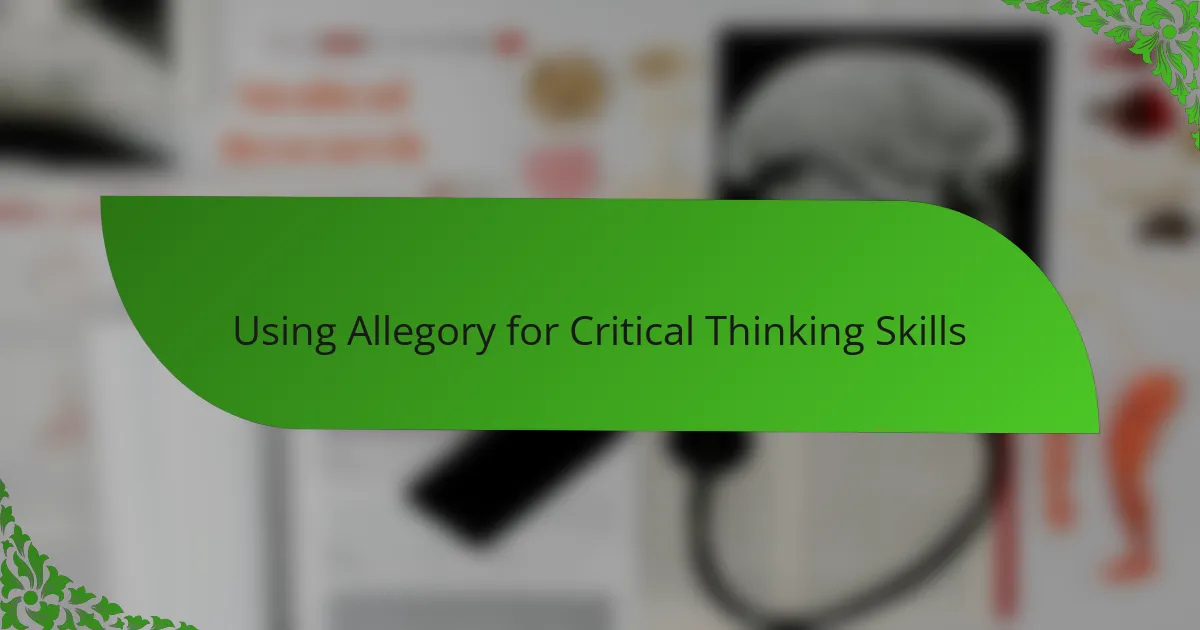
Using Allegory for Critical Thinking Skills
Using Plato’s allegory to sharpen critical thinking is something I found surprisingly practical. When I first unpacked the layers of the cave story, I began questioning not just external ideas but my own assumptions. Have you ever paused and wondered why you believe certain things without really examining them? That moment of self-doubt can be both unsettling and enlightening.
What really struck me was how the allegory encourages stepping beyond surface-level understanding. It’s like practicing a mental muscle—learning to spot when we’re accepting shadows for reality. I remember catching myself falling into that trap during daily conversations, realizing how easy it is to be swayed by incomplete information. This habit of questioning, inspired by the allegory, became a cornerstone of my critical thinking process.
I also appreciate how the allegory pushes us to embrace discomfort as part of growing our minds. Challenging deeply held beliefs feels risky and awkward at first, but it’s necessary for true insight. Has there been a time when reconsidering something fundamental felt almost like losing your footing? That wobble, I’ve learned, is often where critical thinking really takes root.